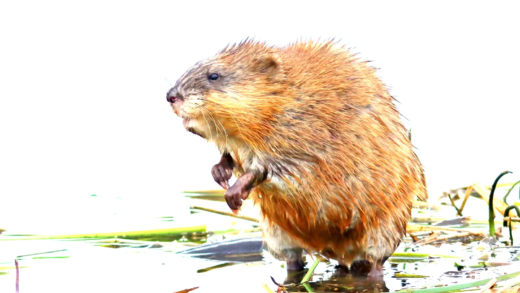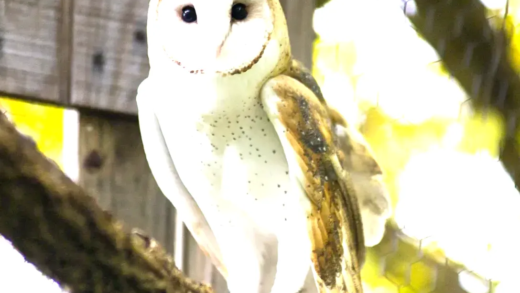Caracals inhabit diverse environments, from savannas to semi-deserts. Their unique ears aid in hunting and communication, while their impressive jumping abilities are vital for survival. Caracals are solitary and communicate through vocalizations and body language. Though currently classified as “Least Concern,” they face threats like habitat loss and hunting. Fun facts reveal their remarkable leaping skills and distinctive tufts, making them unique among felines.
Where Do Caracals Live?
Caracal habitats are diverse, ranging from savannas to semi-deserts. These adaptable felines thrive in various environments across Africa, the Middle East, and parts of Central Asia. Understanding where caracals live helps us appreciate their role in the ecosystem.
- Savannas: Open grasslands provide ample hunting opportunities for caracals. Here, they can easily spot prey like rodents and birds.
- Semi-deserts: Caracals are also found in arid regions where they adapt to scarce water and food resources.
- Wooded areas: Although they prefer open spaces, caracals can also inhabit regions with sparse trees, using them for cover.
In summary, caracals are highly adaptable animals that can thrive in various habitats. This flexibility is crucial for their survival, allowing them to evade predators and find food in diverse environments.
The Unique Ears of Caracals
Caracal ear function plays a vital role in their hunting and communication strategies. These cats possess distinctive tufted ears that enhance their hearing abilities. The tufts are not just for show; they help to direct sound waves toward their ears, improving their auditory skills.
- Hunting: Caracals can detect even the slightest rustle of grass or movement, allowing them to stalk prey effectively.
- Communication: The tufts may also serve as visual signals to other caracals, conveying emotions or alertness.
In conclusion, the unique ears of caracals are essential for their survival, aiding in both hunting and social interactions. Their impressive hearing capabilities allow them to thrive in the wild.
Jumping High: The Caracal’s Leap
Caracals are renowned for their remarkable jumping abilities. Their strong hind legs allow them to leap up to 3 meters (approximately 10 feet) high, an impressive feat that plays a crucial role in their hunting strategy.
- Hunting strategy: Caracals often use their jumping skills to catch birds in mid-air or to surprise prey from elevated positions.
- Escape from predators: In addition to hunting, their leaping ability helps them evade larger predators.
To sum up, the caracal’s leap is not just a display of athleticism; it’s a vital aspect of their survival. Their jumping ability sets them apart in the feline world, making them exceptional hunters.
What’s on the Menu?
Caracals are skilled hunters with a varied diet that primarily consists of small mammals and birds. Their hunting strategies are quite fascinating and showcase their adaptability. Caracal diet includes:
- Rodents: These small creatures make up a significant portion of their diet, especially in savanna habitats.
- Birds: Caracals are known for their ability to leap high into the air, making them adept at catching birds in flight.
- Other Small Mammals: They also hunt rabbits, hares, and sometimes even small antelopes.
Caracals employ various hunting techniques, including stalking and ambushing. Their keen eyesight and exceptional hearing help them locate prey. After spotting their target, they often use stealth to get as close as possible before launching a surprise attack. This method is particularly effective in open areas where they can utilize their agility.
In summary, the caracal’s diet and hunting strategies are essential for its survival, allowing it to thrive in diverse environments.
Are Caracals Social?
Caracal social behavior is intriguing. These cats are generally solitary animals, preferring to hunt and live alone. Social interactions among caracals are primarily limited to mating and mothers raising their young. However, there are nuances to their social behavior:
- Territoriality: Caracals maintain territories that they mark with scent to ward off others. This behavior helps minimize conflicts over resources.
- Communication: While they are solitary, caracals communicate through vocalizations and body language, particularly during mating season.
- Mother-Young Bond: Female caracals are attentive mothers, teaching their kittens vital survival skills until they are ready to fend for themselves.
In conclusion, while caracals are largely solitary, their social interactions are essential for reproduction and the upbringing of their young.
Adapting to the Wild
Caracal environmental adaptations are remarkable. These agile cats have evolved various traits that help them thrive in their habitats. Key adaptations include:
- Camouflage: Their tawny coats blend seamlessly with the grasslands and savannas, allowing them to stalk prey effectively.
- Physical Agility: Caracals possess strong hind legs and a flexible spine, enabling them to make impressive leaps, crucial for hunting and escaping predators.
- Dietary Flexibility: Their varied diet allows them to adapt to different environments, ensuring they can find food even when certain prey is scarce.
In summary, the caracal’s adaptations to the wild enhance its chances of survival. By blending in with their surroundings and displaying remarkable agility, caracals continue to thrive in diverse ecosystems.
Speaking the Caracal Language
Caracals communicate with each other using a variety of methods. Their communication strategies include vocalizations, body language, and scent marking, which all play crucial roles in their social interactions.
- Vocalizations: Caracals produce a range of sounds, including growls, hisses, and purrs. These vocalizations can signal distress, territorial claims, or readiness to mate.
- Body Language: Their posture and movements convey a lot about their mood and intentions. For example, a caracal with its ears flattened may be feeling threatened, while one standing tall may be asserting dominance.
- Scent Marking: Caracals use scent to communicate territory boundaries. They may scratch trees or bushes to leave their scent, marking their area and warning others to stay away.
In conclusion, the communication methods of caracals are essential for their survival, helping them navigate social interactions and maintain territories.
Conservation Status: Are Caracals in Danger?
The conservation status of caracals is a growing concern due to habitat loss and hunting. Currently, caracals are listed as “Least Concern” on the IUCN Red List, but their populations face numerous threats that could impact their long-term survival.
- Habitat Loss: Urbanization and agriculture have led to significant habitat destruction. As human activities expand, caracals lose their natural homes.
- Hunting: In some regions, caracals are hunted for their pelts or because they are seen as pests by farmers. This hunting pressure can affect local populations.
- Climate Change: Changes in climate can alter the availability of prey and suitable habitats, putting additional stress on caracal populations.
In summary, while caracals are not currently classified as endangered, ongoing conservation efforts are essential to ensure their survival in the wild.
Fun Facts About Caracals
Caracals are fascinating creatures with some quirky traits that make them stand out in the animal kingdom. Here are a few fun facts:
- Leap of Faith: Caracals can leap up to 3 meters (10 feet) high to catch birds mid-flight, showcasing their incredible athleticism.
- Distinctive Tufts: Their tufted ears not only enhance their hearing but also add to their unique appearance, making them easily recognizable.
- Night Owls: Caracals are primarily nocturnal, preferring to hunt during the night when their prey is most active.
- Solitary Spirits: Unlike many big cats, caracals are solitary and prefer to hunt alone, which makes them unique among felines.
In conclusion, caracals are not only skilled hunters but also possess interesting traits that contribute to their charm and adaptability in the wild.





Comments are closed.